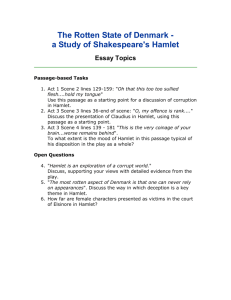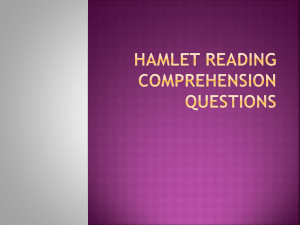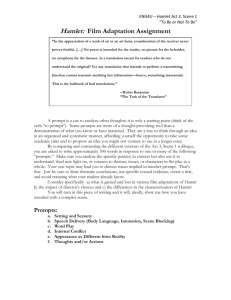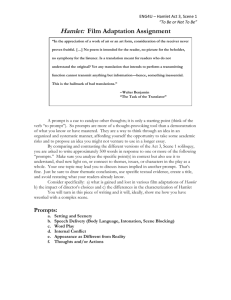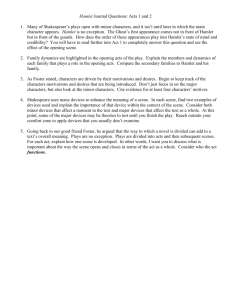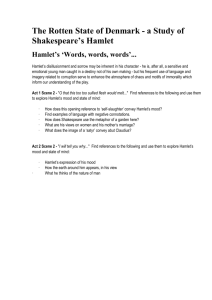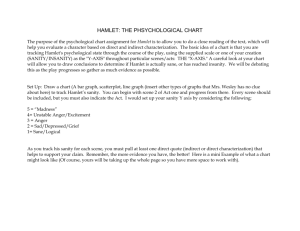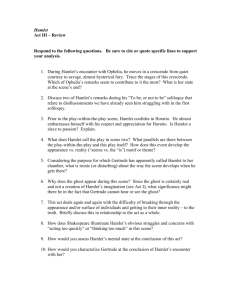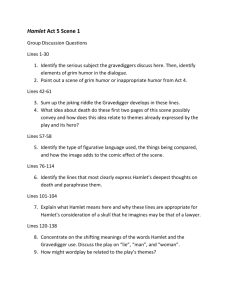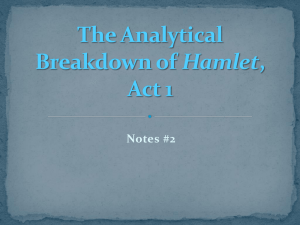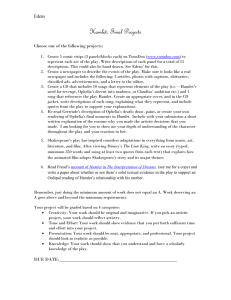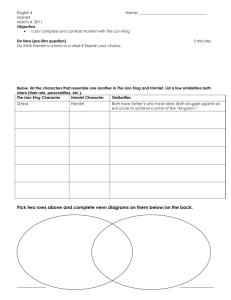Taking Notes and Reading Hamlet
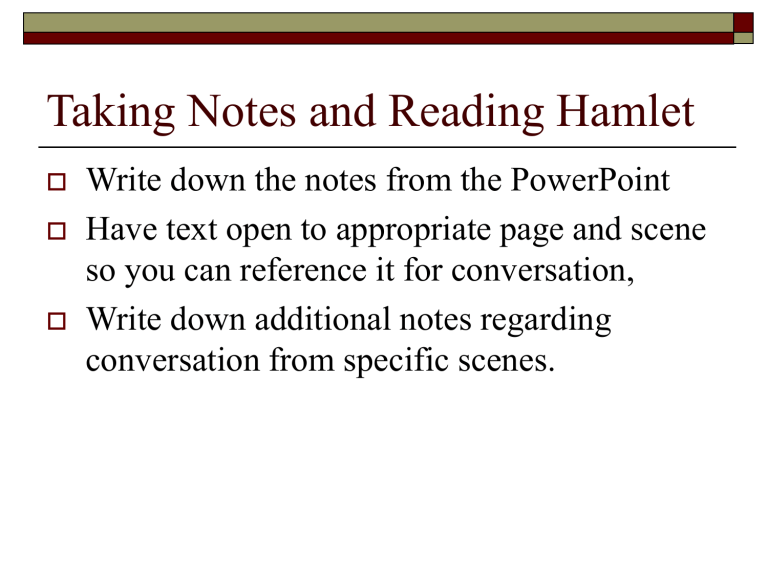
Taking Notes and Reading Hamlet
Write down the notes from the PowerPoint
Have text open to appropriate page and scene so you can reference it for conversation,
Write down additional notes regarding conversation from specific scenes.
Reading Hamlet
The text of the play is on the right hand pages only.
You will find scene summaries at the beginning of each scene on left page.
You will also find explanations for words and lines you are not likely to recognize.
You must read these explanations and definitions.
Reading Hamlet
Don’t worry that this language sounds unusual to you.
If you read the scene summaries first, you will know what to expect when you read the scenes.
Also, if you don’t understand a word or a phrase, look on left page. If you don’t find the answer there, keep going. You will likely be able to figure out what is going on from the summaries and class discussion.
Reading Hamlet
Syntax—word order in a sentence.
Much of the phrasing that makes Shakespeare sound foreign to young readers is due to the inverted syntax or word order of the lines.
Examples: When referring to the ghost,
Horatio says “But answer made it none”
But it made no answer.
Reading Hamlet
More Examples of inverted syntax:
I shall the effect of this good lesson keep
I shall keep the effect of this good lesson (I, 3, 49)
What said he? (II, 1, 98).
What did he say?
But these cannot I command to any utt’rance of harmony (III, 2, 391).
But I cannot command these to any utt’rance of harmony.
Reading Hamlet
Also be mindful of descriptions of common things that are described figuratively with
Personification and metaphor.
EX. Act I, Sc 5—Ghost
EX. Act I, Sc 4—Hamlet describing the his father’s return as a ghost.
Reading Hamlet
Figurative language—try to figure it out as you go.
Write down explanations during discussion.
Read Slowly!
You are not equipped to read this text with speed.
If you read too quickly, you will not understand the simple plot development, you will get frustrated and perhaps stop reading.
So don’t let that happen
